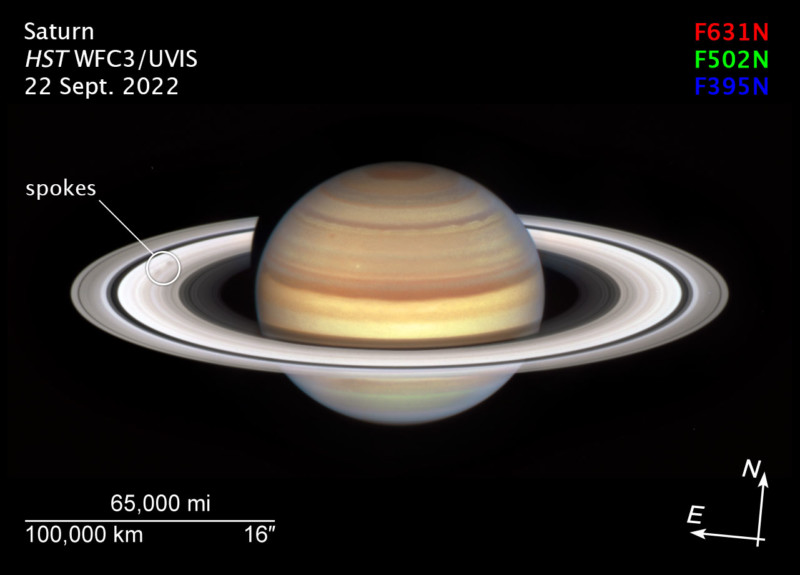Hubble Photographs Mysterious Seasonal ‘Spokes’ in Saturn’s Rings
![]()
New photos from Hubble show what scientists call “spokes” across Saturn’s rings. First seen by NASA’s Voyager in the 1980s, these spokes appear seasonally and scientists still can’t fully explain them.
These mysterious features in the rings appear in the years preceding and following Saturn’s equinox. The planet’s autumnal equinox of its northern hemisphere is set to take place on May 6, 2025, and these spokes will become more prominent as that date approaches.
Like Earth, Saturn is tilted on its axis and thus has four seasons, but due to the gas giant’s much larger orbit, those seasons last much longer: each is equivalent to about seven Earth years.
“Equinox occurs when the rings are tilted edge-on to the Sun. The spokes disappear when it is near summer or winter solstice on Saturn. When the Sun appears to reach either its highest or lowest latitude in the northern or southern hemisphere of a planet,” NASA explains.
![]()
Hubble is being tasked with capturing these strange spokes, and these “smudgy features” appear related to the planet’s magnetic field and its interaction with the solar wind, NASA explains.
“Planetary magnetic fields interact with the solar wind, creating an electrically charged environment (on Earth, when those charged particles hit the atmosphere this is visible in the northern hemisphere as the aurora borealis, or northern lights),” NASA continues.
“Scientists think that the smallest, dust-sized icy ring particles can become charged as well, which temporarily levitates those particles above the rest of the larger icy particles and boulders in the rings.”
That is, though, just a theory — scientists actually don’t truly know what causes them and why. Hopefully, that mystery will be solved with this spoke cycle as new observations from Hubble will be combined with archival data from NASA’s Cassini mission in an attempt to finally understand this enigma.

The shape and shading of spokes varies—they can appear light or dark, depending on the viewing angle, and sometimes appear more like blobs than classic radial spoke shapes, as seen here. The ephemeral features don’t last long, but as the planet’s autumnal equinox approaches on May 6, 2025, more will appear. Scientists will be looking for clues to explain the cause and nature of the spokes. It’s suspected they are ring material that is temporarily charged and levitated by the interaction between Saturn’s magnetic field and the solar wind, but this hypothesis has not been confirmed.
Saturn’s last equinox took place in 2008 while Cassini was orbiting Saturn and performing close-up reconnaissance. It and Voyager are long gone — Cassini’s mission ended in 2017 — only Hubble remains tasked with observing the “spoke season” this time around. This first set of observations, above, is just the beginning.
Image credits: Science by NASA, ESA, Amy Simon (NASA-GSFC), Image processing by Alyssa Pagan (STScI)